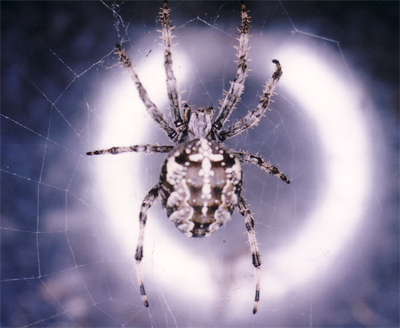
CLASS ARACHNIDA | |
Arachnids are a relatively homogeneous group. They have adapted to life on land by developing a waxy layer covering the cuticle that conserves water; internal respiratory surfaces; internal fertilisation of eggs by sperm; special sensory organs. Arachnids bear median or lateral eyes on the prosomal carapace. Special olfactory or tactile hairs called setae cover the body surface. Slit organs pits within the cuticle detect tension changes in the exoskeleton and air. Scorpions possess comb-like pectens on the underside of the abdomen, which pick up vibrations from the ground. Chelicerae and pedipalps are used to capture and break up food. Some arachnids immobilise their prey with neurotoxins. Black widow spiders and scorpions of the genus Androctonus can inflict fatal damage to humans but these are exceptions. The bites and stings of most arachnids are practically harmless. Arachnids pre-digest food by pouring salivary juices onto the meal, which is sucked up by muscular contractions of the pharynx. Arachnids have developed a system of internal fertilisation whereby the sperm are packaged in spermatophores and placed within the body of the female. Scorpions, pseudoscorpions and whip scorpions perform courtship dances, during which the male guides the female so that her genital opening picks up a spermatophore he has deposited on the surface. The majority of arachnids care for their young. Some scorpions give birth to live young, which cling to their mother’s back until after the first moult. Many spiders share food and space with their spiderlings for a while. In spite of these adaptations many arachnids are confined to humid environments and avoid direct sunlight by nocturnal or secretive habits. The ten orders differ in the number of somites or segments and in the structure of the appendages. Five orders are illustrated here. |
 |
| SOLIFUGAE | ACARINA | SCORPIONES | UROPYGI | ARANEAE |






